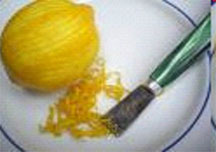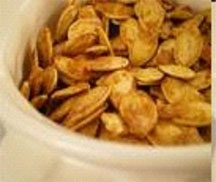The Art of Stretching the Grocery Dollar
By Alice Osborne
 We lived frugally when I was raising my children. There just wasn't much money and I was feeding a family of nine and assorted friends and neighbors on $10 a month. We grew a big garden and had raspberries, grape vines, and a peach tree in our yard. During harvest season we'd glean the orchards or fields when harvest was over. (The requirement was to give at least 10% to the food bank. Cool idea, huh?)
We lived frugally when I was raising my children. There just wasn't much money and I was feeding a family of nine and assorted friends and neighbors on $10 a month. We grew a big garden and had raspberries, grape vines, and a peach tree in our yard. During harvest season we'd glean the orchards or fields when harvest was over. (The requirement was to give at least 10% to the food bank. Cool idea, huh?)
 Then we would can, dehydrate, and freeze everything we could and live off it during the winter months. We also stored wheat - Montana Turkey Red Hard Winter Wheat. I could do just about anything with this grain but knit a sweater.
Then we would can, dehydrate, and freeze everything we could and live off it during the winter months. We also stored wheat - Montana Turkey Red Hard Winter Wheat. I could do just about anything with this grain but knit a sweater.
And along the way I learned smart food-stretching techniques from Pauline Hatch, Connie Honroth, Sandy Chriswell, Aunt Annie, Chris Carver, Mary Cannon, my mom, and many others. I thought it would be good to share these ideas with you - this is the season when a little extra money always comes in handy, and if we can shave some off our food budget, well, why not?
Maybe there's something here you haven't thought of, and if you have a good tip that isn't here, please email me - I'll build another article around it so we can all benefit from YOUR wisdom and expertise! We're all in this together!
 1) Bones from meat, fish, poultry make excellent soup stock: partially cover with water and simmer covered several hours; strain and store in refrigerator or freezer.
1) Bones from meat, fish, poultry make excellent soup stock: partially cover with water and simmer covered several hours; strain and store in refrigerator or freezer.
2) Save every scrap of meat, including giblets and necks from poultry. A few bits of meat added to a vegetable main dish make it really good. Giblets can also be frozen (uncooked) in plastic bag until enough are collected to make a meal.
 3) Juice/syrup from canned fruit can be used as liquid minus sweetening in quick breads; as sweetening for non-sweet juice; combined with juice and frozen for popsicles; as pudding or gelatin base (minus sugar).
3) Juice/syrup from canned fruit can be used as liquid minus sweetening in quick breads; as sweetening for non-sweet juice; combined with juice and frozen for popsicles; as pudding or gelatin base (minus sugar).
4) Fat/drippings from meat can be rendered or used directly if already cooked to saute onions or other veggies.
5) Vegetable peels, stems and tops are a valuable addition to soup stocks. Stems are also often good sliced thinly and stir-fried with other vegetables. Tops of carrots, radishes, celery, etc. are good chopped finely and added to soups and omelets. Hash browned potato peels are great.
 6) Grated citrus rind can be frozen for later use. Pineapple cores and rinds can be simmered to make juice. Apple peelings are good raw and can be simmered to make liquid pectin.
6) Grated citrus rind can be frozen for later use. Pineapple cores and rinds can be simmered to make juice. Apple peelings are good raw and can be simmered to make liquid pectin.
7) Stale bread can be thinly sliced in strips and baked at 225 degrees for 1 hr to make zwieback. Bread crumbs should be saved and used seasoned or plain for breading, thickening, ground meat stretching.
 8) Seeds from pumpkin, squash, or watermelon can be toasted in a 350 degree oven with or without butter or salt for a healthy snack treat.
8) Seeds from pumpkin, squash, or watermelon can be toasted in a 350 degree oven with or without butter or salt for a healthy snack treat.
9) Liquids from steaming vegetables or fruits can be used as the liquid in breads, soups, or sauces.
 10) Leftover meat, vegetables, fruit or rice (if unseasoned) can be pureed and used for baby food, or thrown in the soup pot, as can leftover tossed salad or most main dish recipe failures.
10) Leftover meat, vegetables, fruit or rice (if unseasoned) can be pureed and used for baby food, or thrown in the soup pot, as can leftover tossed salad or most main dish recipe failures.
 11) Liquid from pickles can be used to make more pickles; sliced up carrots, peppers, etc. marinate well in leftover pickle juice.
11) Liquid from pickles can be used to make more pickles; sliced up carrots, peppers, etc. marinate well in leftover pickle juice.
 12) Almost empty ketchup bottles can be filled with oil and vinegar and herbs to make salad dressing.
12) Almost empty ketchup bottles can be filled with oil and vinegar and herbs to make salad dressing.
 13) Anything that is unfit even for soup (few things are) will probably make great compost for the garden. Use it instead of throwing it out.
13) Anything that is unfit even for soup (few things are) will probably make great compost for the garden. Use it instead of throwing it out.

